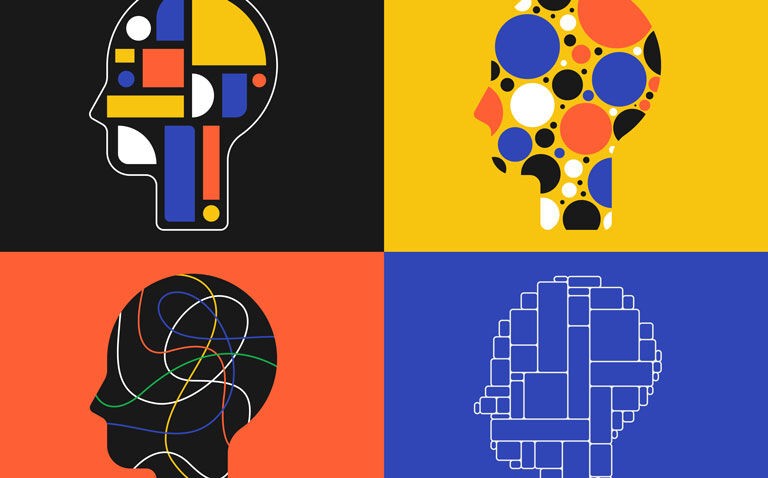Andreas Reif is Head of the Department of Psychiatry, Psychosomatic Medicine and Psychotherapy at the University Hospital, Frankfurt. He spoke to Rod Tucker about treatment-resistant depression and innovations in the management of the condition.

Andreas Reif’s main clinical areas of interest are mood disorders with a focus on bipolar disorders, suicidality, therapy-resistant depression and adult ADHD. From a research perspective, he is interested in personalised medicine in psychiatry as well as the neurobiology of mental disorders, with a focus on improving diagnosis and treatment. He was involved in establishing the German National Centre for Affective Disorders and sits on its board of directors.
Establishing the National Centre for Affective Disorders
Professor Reif described how the main reason for establishing the national centre (along with seven other institutions in Germany) was to ‘create a research and clinical studies network of centres of excellence for mood disorders.’ He believed that such a network was lacking in Germany, especially considering how ‘depression is the most prevalent disorder in the field of psychiatry and there are only a few hospitals that really specialise in mood disorders.’
The overarching aim he felt, was really to bring together existing expertise in the fields of neurostimulation, neuroimaging, genetics and psychopharmacology and therefore ‘create a network that leverages existing studies that are able to build up cohorts for research purposes as well as providing an existing network for both academic and industry sponsored studies on mood disorders in a larger network.’
Defining treatment-resistant’ depression
Professor Reif described how unfortunately there is no single universally accepted definition, though existing ones are similar and vary slightly. He mentioned that the current definition used for regulatory purposes is ‘the failure of two antidepressant treatments that have been provided with an adequate dose and duration.’ This he explained was a rephrasing of the criteria for treatment-resistant schizophrenia which was used after the introduction of clozapine.
Despite this somewhat straight forward definition, Professor Reif noted that in practice, it was more difficult to interpret. For instance, non-medical treatments such as psychotherapy, and CBT are not included and there was some uncertainty over what constituted an adequate dose and duration of treatment. As he said, the current definition ‘gets messier and messier the longer you think about it.’ Nevertheless, he feels that at least two-thirds of the patients he sees in outpatient clinics have treatment-resistant depression.
In contrast, there are others who have been suboptimally managed with either an inadequate dose of treatment or the way in which the drug had been used was not guideline compliant. Fortunately, in such cases, treatment could be easily modified and patients discharged back into primary care.
Underlying mechanisms and patient impact
Professor Reif thinks that there is still much to be learnt about the underlying causes of treatment-resistant depression. He mentioned how there was a known relationship with certain factors such as ‘co-morbidity with anxiety disorder, ADHD, early onset depression, melancholic features such as early suicide attempts,’ however, but these were merely associated risk factors and not causative.
Delving into the neurobiology has also failed to provide satisfactory explanations, particularly in relation to genetics, with no obvious differences between those who have can be considered to have regular depression and those who eventually display treatment-resistant depression. It has been postulated that there is some degree of neurological imbalance between pro-inflammatory and anti-inflammatory markers or a disturbance in the connections between the limbic system and the prefrontal cortex.
Nevertheless, he thinks that a better understanding of possible mechanisms would arise from prospective studies that followed up on depressed patients and to identify those who enter remission and those who go on to become treatment-resistant, though sadly, there is an absence of such studies. Although inadequate adherence may be a factor in treatment-resistant depression, this could easily be identified with therapeutic drug monitoring.
Professor Reif feels that the burden upon both the individual and healthcare systems is enormous. Treatment-resistant patients have a higher level of hospitalisations and suicide attempts but there is also an economic impact. As he said, ‘individually, often these patients are unable to work or work with reduced ability’ and there is a high level of unemployment combined with a huge negative impact on their quality of life.
Management of treatment-resistant depression
Currently, there are several recommended approaches. First, the patient’s existing therapy can be augmented with an atypical antipsychotic such as quetiapine or lithium. Another approach is to combine an SSRI or SNRI or a tricyclic with mirtazapine or trazadone. Treatment switches can also be effective but this is only recommended once. For instance, if patients have already been changed from an SSRI to a SNRI, there is no benefit from any further switches. Both transcranial magnetic stimulation or ECT have also been used and in some cases prove to be very effective. Finally, the addition of psychotherapy to the current medical treatment can also be tried.
Professor Reif said that the efficacy of these approaches, at least from an examination of the current evidence, is that between 20% to a third of patients should be helped. He is not overly convinced by these figures but this probably reflects how in practice he deals with more severely ill patients. Despite this, he does believe that with the combination of high-density psychotherapy, optimised medical treatment and neuro-stimulatory techniques, ‘over 90% of patients will ultimately remit.’ For those patients who fail to remit with such combination therapy, he thinks that experimental approaches such as deep brain stimulation or invasive vagus nerve stimulation are likely to be more successful.
Innovations in management
Professor Reif mentioned the ESCAPE-TRD study in which nasal esketamine was compared to augmentation therapy with extended-release quetiapine in patients with treatment-resistant depression. Esketamine represents a first-in-class treatment targeting the glutamate system although Professor Reif had already been using the drug experimentally at his centre for severely ill patients and found it to be very effective.
While there were studies demonstrating that esketamine was effective, esketamine had only been compared to placebo plus newly initiated oral antidepressants, hence it has not been possible to determine whether it is more effective than any of the existing therapies. As he said, ESCAPE-TRD was really the first head-to-head study comparing esketamine with an active treatment, a move he thinks was ‘quite brave for Janssen because they could have failed.’ ESCAPE-TRD was conducted over 32 weeks and which he says, was a sufficiently long time to determine its effectiveness.
He described how the study found that ‘esketamine was significantly better in all outcomes but most importantly, met its primary outcome of remission at week eight in an acute setting.’ In fact, there was an almost 10% difference in the remission rate compared to quetiapine.
A further and relevant finding was in relation to the main secondary outcome, which found that a significantly higher proportion of patients given esketamine, who achieved remission achieved at week eight, maintained relapse free through to week 32. When asked to summarise the findings, he said that the overall conclusion was that ‘esketamine was superior to quetiapine in achieving remission in treatment-resistant depression.’
Next steps for treatment-resistant depression
Professor Reif thinks that much more needs to be achieved in the management of treatment-resistant depression and believes that there are at least three initial steps required. Perhaps the immediate priority, he feels, is to ensure access to esketamine given how currently, few centres provide the drug.
Secondly, with only around a quarter of patients achieving remission after eight weeks, it was necessary to explore the development of relevant biomarkers, to identify those patients likely to respond, since this was impossible from a clinical perspective.
Thirdly, is the acknowledgement that depression is actually a heterogenous disorder with many underlying pathologies and the introduction of a wide range of therapies, affecting different biochemical pathways, would enable the treatment of a higher number of patients.
Finally, Professor Reif believes that a wider adoption of esketamine is needed, together with its incorporation into management algorithms. While accepting that the drug is not a panacea, he says that it represents a valuable addition to psychiatry’s therapeutic armamentarium and is hopeful that because of this innovation, the pharmaceutical industry will be spurred on to develop more effective treatments in psychiatry.










